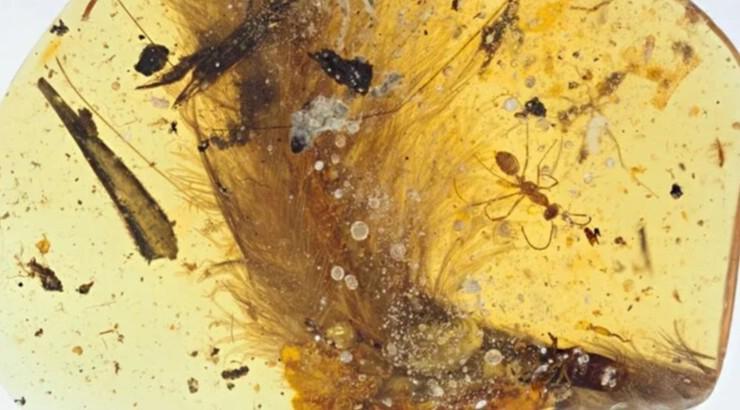
Rare 99-mn-year-old dinosaur tail with feathers found in amber
Imagine stumbling upon a piece of history that’s been preserved for millions of years, and it’s a direct link to the mighty dinosaurs that once ruled the earth. That’s exactly what scientists have achieved, and it’s a groundbreaking discovery that’s sending shockwaves through the scientific community. A 99 million-year-old dinosaur tail, complete with feathers, has been found in a fossil in Myanmar, providing a unique glimpse into the lives of these prehistoric creatures.
The fossil was discovered in the Hukawng Valley in Myanmar, a region known for its rich fossil deposits. The team of scientists, led by Dr. Lida Xing from the Beijing Museum of Natural History, was thrilled to find the well-preserved tail, which is estimated to be around 99 million years old. But what’s even more remarkable is that the tail still retains its soft feathers, a discovery that challenges our current understanding of dinosaur biology.
The tail is made up of eight small vertebrae, which are still attached and surrounded by the soft feathers. The team used high-tech imaging techniques, including X-ray computed tomography (CT) scans, to examine the fossil in detail. The scans revealed the intricate structure of the feathers, which were found to be similar to those of modern birds.
But what does this discovery mean for our understanding of dinosaurs? For a long time, it was believed that feathers were exclusive to birds, and that dinosaurs were scaly and reptilian. However, recent discoveries have challenged this assumption, suggesting that many dinosaurs, including theropods and ornithischians, may have had feathers.
This latest discovery provides further evidence that feathers were not unique to birds, and that many dinosaurs, including theropods, may have had feathers. The coelurosaurs, to which the young dinosaur belonged, were a group of theropods that included the well-known Velociraptor and Oviraptor.
The significance of this discovery cannot be overstated. It’s a rare opportunity to study the biology of a dinosaur in extraordinary detail, and it provides a unique window into the lives of these prehistoric creatures. The fact that the tail is still preserved with its feathers intact is a testament to the remarkable conditions in which it was fossilized.
The team’s findings were published in the journal Nature Communications, and they have sparked a flurry of interest among scientists and the general public alike. The discovery is a reminder of the importance of continued exploration and research into the natural world, and the incredible secrets that it still holds.
In conclusion, the discovery of a 99 million-year-old dinosaur tail with feathers is a remarkable find that has shed new light on the biology of these prehistoric creatures. It’s a testament to the incredible preservation conditions in Myanmar and the dedication of the scientific team who worked tirelessly to uncover this important discovery.






